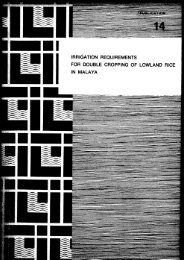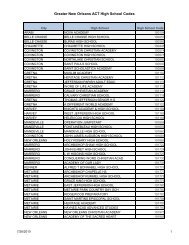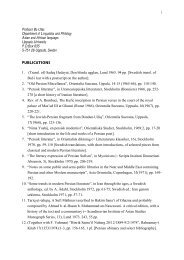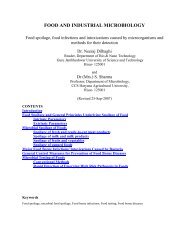On the Future of Indigenous Traditions - Munin
On the Future of Indigenous Traditions - Munin
On the Future of Indigenous Traditions - Munin
You also want an ePaper? Increase the reach of your titles
YUMPU automatically turns print PDFs into web optimized ePapers that Google loves.
Syiems system <strong>of</strong> <strong>the</strong> Khasis in Meghalaya is not very different from <strong>the</strong> Parha,<br />
Munda Manki, Doklo Sabha system <strong>of</strong> Adivasis <strong>of</strong> Jharkhand but <strong>the</strong> ‘legitimacy’ <strong>of</strong><br />
<strong>the</strong>ir access to <strong>the</strong>ir own land and forest resource makes a big difference. As in <strong>the</strong> 5 th<br />
and 6 th Schedules, <strong>the</strong> state governments can only introduce <strong>the</strong>ir rules and not impose<br />
<strong>the</strong>m given <strong>the</strong> level <strong>of</strong> autonomy in <strong>the</strong>se schedules. Khasis <strong>of</strong> Mehgalaya being in<br />
<strong>the</strong> 6 th Schedule has been able to maintain <strong>the</strong>ir customary system through which <strong>the</strong>y<br />
not only manage <strong>the</strong>ir community affairs but <strong>the</strong>ir resources too. Syiems, however, is<br />
nei<strong>the</strong>r a perfect system nor are <strong>the</strong> Parha, Munda Manki, Doklo Sabhas and o<strong>the</strong>rs,<br />
especially when those representing it change <strong>the</strong>ir orientation or, changes <strong>the</strong>ir<br />
subsistence or “tribal economy” character to <strong>the</strong> pr<strong>of</strong>it and “market economy”<br />
orientation. This aspect in <strong>the</strong> customary system can also be considered to be on <strong>the</strong><br />
cross road <strong>of</strong> traditional vs. modern, subsistence usages vs. commodity usages. If <strong>the</strong><br />
customary system is still representative <strong>of</strong> <strong>the</strong> collective identity <strong>of</strong> <strong>the</strong> people, <strong>the</strong>n<br />
<strong>the</strong> said principles that make it function as a system must also have its own corrective<br />
mechanism. However, if <strong>the</strong>se customary institutions also become institutionalised<br />
<strong>the</strong>y would encounter problems as any bureaucracy faces. This emphasis can be<br />
understood better with <strong>the</strong> following explanation.<br />
If we recall <strong>the</strong> reference made to <strong>the</strong> report <strong>of</strong> <strong>the</strong> Deber Commission earlier in<br />
chapter four, <strong>the</strong> Adivasis have <strong>the</strong>ir philosophy “which has kept <strong>the</strong>se people free<br />
from greed <strong>of</strong> material wealth…” this needs to be understood here. The same<br />
philosophy in <strong>the</strong>ir traditions has enabled <strong>the</strong> Adivasis to codify <strong>the</strong>ir social, cultural,<br />
and economic life with certain guiding principles. It can be seen in <strong>the</strong>ir unique<br />
religious traditions and practices which are centred on <strong>the</strong> forces <strong>of</strong> nature and <strong>the</strong><br />
forest. Like many indigenous traditions, <strong>the</strong>ir religious practices indicate a belief that<br />
<strong>the</strong> natural universe is continuous with <strong>the</strong> human world <strong>of</strong> interactions and<br />
sentiments. The human, nature, and supernatural are all bound in mutual<br />
relationship. 146 However, this collective and communitarian approach represented by<br />
<strong>the</strong> customary system in <strong>the</strong> respective states (provinces) where we see growing<br />
market economies, comodification <strong>of</strong> all <strong>the</strong> resources, conversion <strong>of</strong> Adivasi<br />
indigenous territories into commercial estates and industrial cities. How can <strong>the</strong><br />
146 Pradip Prabhu , “In <strong>the</strong> Eye <strong>of</strong> <strong>the</strong> Storm; Tribal People <strong>of</strong> India,” in <strong>Indigenous</strong> <strong>Traditions</strong> and<br />
Ecology by Surajit Chandra Singh ( Cambridge: Harward University Press, n.d.), 57.<br />
104

















